#chinesearchery
Text
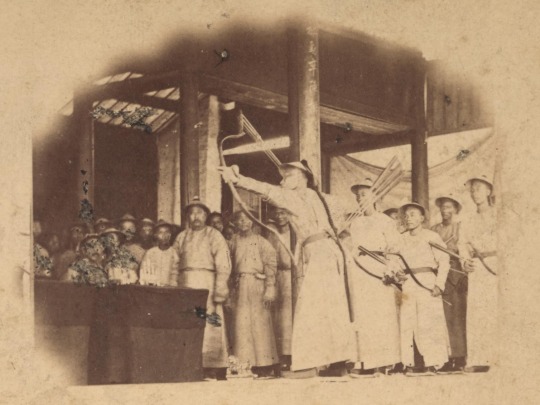
Manchu Archery Canton, 1861.
#manchubow#manchuarcher#manchuarchery#traditionalarchery#chinesearchery#qingdynasty#qingarcher#qingarchery#chinesehistory#wayofthebow#archery
18 notes
·
View notes
Video
Working on shooting form in traditional Chinese archery - very different from what I’m used to but the more I do it, the more I like it - in some ways more than the ways are traditionally shot in the West. They’re both instinctive but something about the meditative nature of it appeals to me. Messing around with some whistling arrows and holding the arrows in the gripping hand. It’s not archery session if something doesn’t break but I only broke one whistling arrowhead and need to fix the shaft of another. #archery #chinesearchery #traditionalarchery #manchuarchery #thumbdrawarchery #thumbdraw #whistlingarrow #qingarchery #射箭 #instinctivearchery #bowandarrow #horsebow https://www.instagram.com/p/B9DBfyiBSrb/?igshid=668tbo6uecy8
#archery#chinesearchery#traditionalarchery#manchuarchery#thumbdrawarchery#thumbdraw#whistlingarrow#qingarchery#射箭#instinctivearchery#bowandarrow#horsebow
0 notes
Text
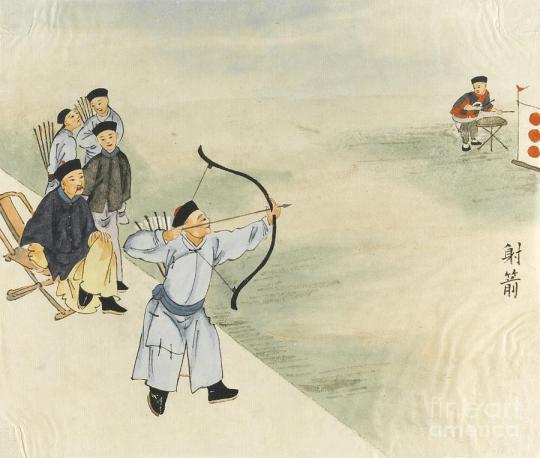
Typical Qing/Manchu style of target with a single bullseye.
When shooting in the Imperial Exams, credit was given for hitting anywhere on the target. But I alway light the idea represented by a single bullseye, that the shot that really counts is hitting the center
#manchuarchery#chinesearchery#chinesearcher#manchuarcher#qingarchery#traditionalarchery#qingarcher#bannerman#qingbannerman
1 note
·
View note
Text

Qianlong Emperor at Full Draw. Interesting to note the length of the fletching. During the 18th century, the fletching on Manchu arrows easily fit within the brace height.
#manchurian#qingdynasty#qianlong#manchuarchery#manchuarcher#traditionalarchery#chinesearcher#chinesearchery#traditonalarchery#bannerman#manchubannerman
1 note
·
View note
Photo
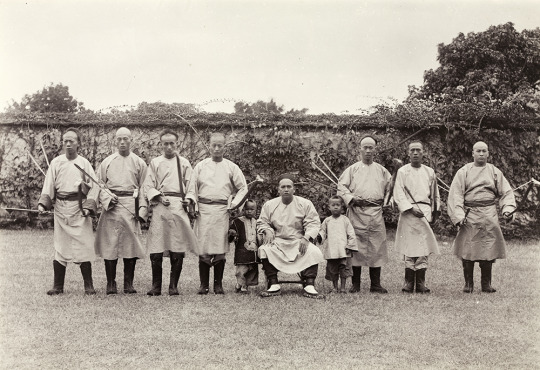
Qing Military Archers, circa 1870-1900. I imagine the man seated in the center is their teacher and those children are his sons. Source: https://www.hpcbristol.net/visual/mx01-137
#manchurian#manchus#manchu#qingdynasty#qing#qingarchery#manchuarchery#traditionalarchery#traditionalarcher#chinesearchery#chinesearcher#archery#bows#bowsandarrows
12 notes
·
View notes
Photo
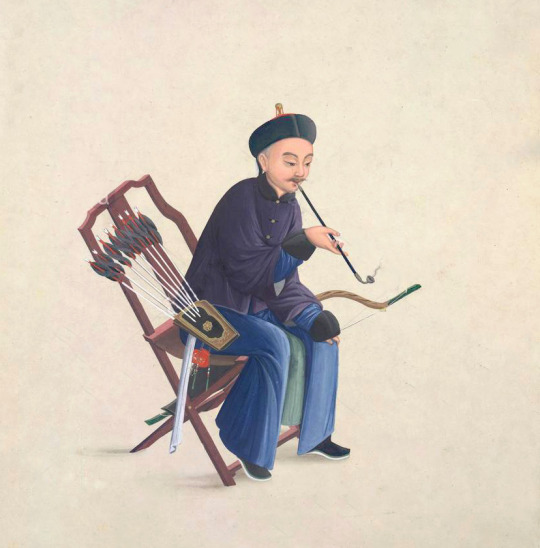
A Qing Army captain sitting in a folding chair like those used on campaign. From a volume of Chinese drawings representing Chinese. China, c. 1800
#manchu#bannerman#qing#qingdynasty#archer#manchuarchery#manchuarcher#chinesechair#chinesefurniture#traditionalarchery#chinesearchery
10 notes
·
View notes
Photo

Manchu Hunter on horseback
#archery#traditionalarchery#manchurian#manchu#manchuarcher#manchuarchery#chinesearchery#qingdynasty#qing#qingarchery
6 notes
·
View notes
Text

A PAIR OF CHINESE PAINTINGS, "Scenes of Mongolian Life.”
4 notes
·
View notes
Photo

Mongol Horseman with Bow and Arrow (Du lie tu 獨 獵 圖), undated Qing dynasty, 1644–1912
Chinese
Ma Gongxian 馬 共 顯, attributed to, Song dynasty (?)
Hanging scroll; ink and color on silk
An interesting Qing era image of a Mongol, notable for it anachronistic representation of the character with archery tackle and sword typical of the Ming period.
Source: https://artmuseum.princeton.edu/collections/objects/22794
#qingpainting#mongol#mongolian#traditonalarchery#horsebackarchery#mountedarchery#archery#chinesearchery#chinesehistory#mongols
4 notes
·
View notes
Photo

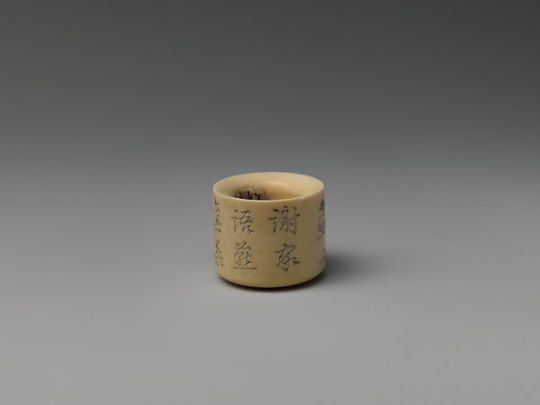

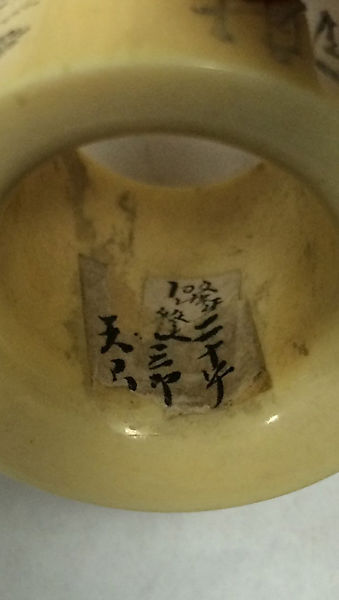
Archer's Ring (清 扳指)
17th–19th century
Signed by ivory carver Wen Zhao
In Manchu archery, the bowstring is pulled back with the thumb of the right hand, making a thumb ring essential both to protect the thumb and to ensure a smooth release of the arrow. In addition to their practical function, thumb rings were also worn regularly as personal adornment. All Manchu archers, even the highest ranking aristocrats, favored plain thumb rings of bone or antler for use in hunting and warfare. At other times, however, they wore thumb rings that were highly decorated and made of fragile or precious materials, such as jade, amber or ivory.
This ring is inscribed with a line of poetry by Su Shi (1037–1101), a major figure of the Song dynasty, and the name of the ivory carver: The chirping swallows from the eminent Xie family gather at the magnificent hall. Carved by Wen Zhao. Source: https://www.metmuseum.org/art/collection/search/30225
4 notes
·
View notes
Photo

Emperor Qianlong out hunting.
#manchu#manchuarcher#manchuarchery#chineseart#chinesearchery#qianlong#qingdynasty#chinesehistory#traditionalarchery#mountedarchery#horsebackarchery
2 notes
·
View notes
Photo

Antique Chinese Painting Hunting Qing Manchu Noble on Horse Jin Rujian 金如鑒 18/19th C Sealed
Source: https://www.rubylane.com/item/1240195-2014243/Antique-Chinese-Painting-Hunting-Qing-Manchu
#manchuarcher#manchuarchery#traditionalarchery#chinesearchery#horse#chinesehorse#chinesepainting#qingpainting#mountedarchery#horsearchery#chinesehistory#qinghistory
2 notes
·
View notes
Photo

☉論弓矢 鄭憲成
DISCUSSING ARCHERY by Zheng Xiancheng
射為六藝之一。君子所不廢也。考弓之製。以揉木合角筋為之。矢則剡木為之。弓分兩種。射箭弓輕。練力弓重。射弓重則指力不易開張。練弓輕則體力鮮有進步。普通射弓。約有二三力。每力十觔。練弓約七八力以至十餘力。若岳武穆所謂左右三百。其神臂不可及矣。射法。睨矢使直。矢羽使齊。兩足相距一步。膝對足趾。攤腰落膊。左手執弓。將無名指小指。堅定而握之。大指支鏃。食指傍之。右手大指食指扣弦。目注正鵠。向後撒放。矢直飛前。雖不中。不遠矣。尤以壹志凝神為要。所謂內志正外體直。然後中者此也。夫射以觀德。心平體正。持弓矢審固。發而不中。不怨勝己者。反求諸己而已。呂坤曰。射不中。弓無罪。矢無罪。鵠無罪。皆求己之言也。旣尚力。亦尚德。體德二育。與有關係。會中有練習弓矢之一科。蓋取義於此。
Archery is one of the six classical arts, and was thus something a gentleman could not neglect. The bow is made of supple wood so that the tips can be drawn toward each other, whereas the arrows are made of hard wood. There are two kinds of bows: a light bow for shooting arrows, a heavy bow for developing strength. A heavy shooting bow would not be easy to draw. A light practice bow would not build much strength. An ordinary bow will supply about two or three “efforts”, an “effort” [i.e. the draw weight] being about ten pounds. A practice bow will give a draw weight of about seventy or eighty pounds, or can even go over a hundred. Yue Fei was said to be able to draw three hundred pounds, but such magical arms are not very likely.
As for the archery method, looking sideways causes the arrow to shoot straight, and the arrow’s feathers cause it to have greater precision. Your feet are separated by a single stride, your knees in line with your toes. Square your waist [to be facing perpendicular to the target] and lower your arms into position. Your left hand holds the bow with the ring finger and little finger gripping more firmly, the thumb supporting the arrowhead with the forefinger near it. Your right hand’s thumb and forefinger pull back the bowstring. Your gaze is directly toward the bull’s eye [the Chinese word for the center of the target being “swan” as classical archery was used for hunting fowl]. As your hand releases toward the rear, the arrow flies forward. Even if it does not hit the center of the target, it will not be far away from it.
It is especially important that you concentrate your attention upon a single goal [that of hitting the center of the target]. It is said [in the Book of Rites, chapter 46 – “The Meaning of Archery”]: “When internally the archer’s intention was correct, externally his body was then properly positioned… and thus he was able to reach the center. The archery ritual was therefore used as a means of examining one’s character… His mind is calm, his body is poised, he holds the bow and arrow with both delicacy and firmness… If he shoots and misses, he does not blame others for their superior skill, instead he seeks to take the fault entirely upon himself.” Lü Kun similarly said [in Words of Whining, chapter 16]: “When the archer misses, the bow is innocent, the arrow is innocent, and the target is innocent,” for he only has himself to blame. We should value strength, but we should also value virtue, for physical and moral cultivation are both related to each other. The Jingwu Association has a course in archery because it embodies such righteousness.
Source: https://brennantranslation.wordpress.com/2019/12/19/martial-arts-of-the-jingwu-association/
4 notes
·
View notes
Photo
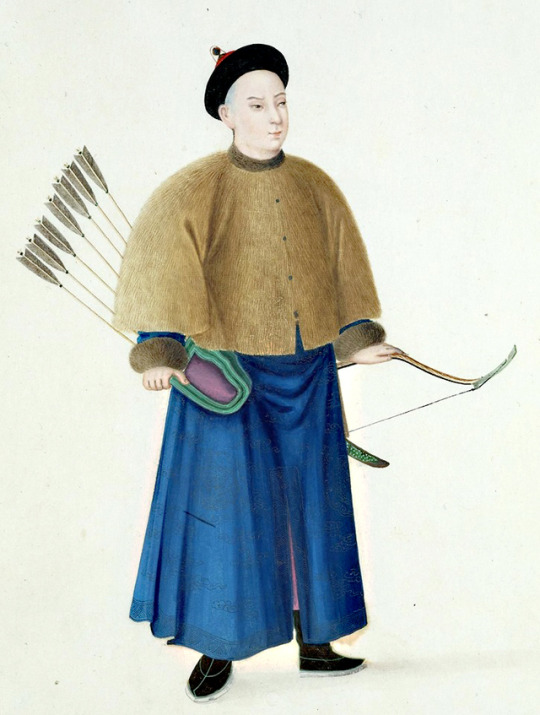
Manchu in a short fur riding coat, probably dressed for the hunt.
#manchu#manchuarchery#traditionalarchery#chinesearchery#qing#qingdynasty#qinghistory#chinesemartialarts#chinesemartialart
4 notes
·
View notes
Photo

Painting of Hua Mulan, the Chinese view, not Disney, 18th century, housed in the British Museum.
2 notes
·
View notes